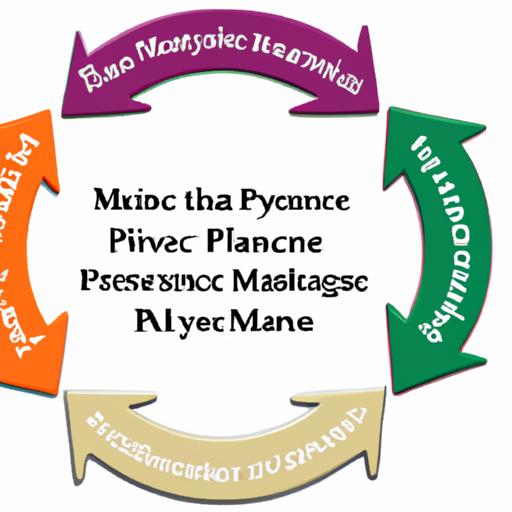Introduction
In the ever-evolving landscape of healthcare, organizations face numerous challenges in maintaining financial stability. To overcome these hurdles, revenue cycle management (RCM) has emerged as a vital practice. By optimizing the financial processes within healthcare institutions, RCM ensures efficient revenue generation and sustains the delivery of quality care. In this article, we will explore the key components, best practices, and emerging trends in revenue cycle management, highlighting its significance for healthcare organizations.

Key Components of Revenue Cycle Management
1. Patient Registration and Scheduling
Proper patient registration and scheduling lay the groundwork for an effective RCM system. Accurate capturing of patient information, insurance details, and demographic data ensures a seamless billing and reimbursement process. By implementing robust electronic health record (EHR) systems, healthcare providers can efficiently manage patient data, reducing administrative errors and enhancing revenue collection.
2. Insurance Verification and Eligibility
To avoid claim denials and delays, verifying patient insurance coverage and eligibility is critical. RCM processes should include real-time verification of insurance benefits to ensure accurate billing and minimize claim rejections. By leveraging technology-driven solutions, healthcare organizations can streamline this verification process, optimizing revenue flow and reducing administrative burden.
3. Charge Capture and Coding
Accurate charge capture and coding are essential for proper billing and reimbursement. Healthcare providers must document services provided using appropriate codes, ensuring compliance with billing regulations. Automated coding solutions can significantly reduce errors and enhance revenue by capturing all billable services, preventing missed opportunities for reimbursement.
4. Claims Submission and Processing
Efficient claims submission and processing are crucial for timely reimbursement. RCM systems must adhere to industry standards and guidelines to avoid claim rejections and denials. By employing advanced claims management software, healthcare organizations can streamline the submission process, reducing administrative costs and accelerating revenue collection.
5. Payment Collection and Reconciliation
Effective payment collection and reconciliation processes are vital to maintain a healthy revenue cycle. Clear communication and transparent billing practices enhance patient satisfaction and facilitate prompt payments. Implementing online payment portals and automated reconciliation systems can streamline these processes, reducing manual errors and improving revenue collection.
6. Denial Management and Appeals
Claims denials can significantly impact revenue flow, making denial management and appeals integral to RCM. Healthcare organizations need efficient systems to track and resolve denied claims promptly. By analyzing denial patterns and implementing proactive measures, organizations can minimize denials, optimize revenue, and improve overall financial performance.

Best Practices for Revenue Cycle Management in Healthcare
1. Utilizing Electronic Health Record (EHR) Systems
Implementing EHR systems provides a comprehensive view of patient information, enabling accurate billing and reducing documentation errors. This technology streamlines data capture, supports seamless information exchange, and enhances revenue cycle efficiency.
2. Automated Coding and Billing Solutions
Automated coding and billing solutions significantly reduce errors, ensuring accurate reimbursement. By employing sophisticated software, healthcare organizations can streamline coding processes, improve accuracy rates, and optimize revenue generation.
3. Regular Audits and Compliance Checks
Conducting regular audits and compliance checks ensures adherence to billing regulations and mitigates potential risks. By proactively identifying and addressing compliance issues, healthcare organizations can avoid penalties, maintain financial integrity, and build trust with stakeholders.
4. Improving Communication and Collaboration
Effective communication and collaboration between clinical and administrative staff are crucial for seamless revenue cycle management. By fostering interdisciplinary teamwork, organizations can enhance documentation accuracy, reduce billing errors, and improve overall financial performance.

Emerging Trends and Technologies in Revenue Cycle Management
1. Integration of Artificial Intelligence (AI) and Machine Learning
AI and machine learning technologies offer predictive analytics capabilities, optimizing claims submission and revenue generation. By analyzing historical data, these technologies identify patterns and trends, minimizing claim denials, and enhancing revenue cycle efficiency.
2. Adoption of Blockchain Technology
Blockchain technology ensures secure and transparent billing and payment processes. By leveraging decentralized and immutable ledger systems, healthcare organizations can enhance data security, prevent fraud, and streamline revenue cycle management.
3. Telehealth and Remote Patient Monitoring Solutions
The rise of telehealth and remote patient monitoring solutions has revolutionized revenue cycle management in virtual care settings. These technologies enable seamless billing, coding, and reimbursement processes, ensuring financial success in the rapidly evolving healthcare landscape.
4. Impact of Value-based Care Models
Value-based care models have transformed the reimbursement landscape, emphasizing quality outcomes over traditional fee-for-service models. Healthcare organizations must adapt their revenue cycle management strategies to align with value-based care, ensuring financial sustainability and success.
Conclusion
In a healthcare industry driven by financial stability and quality care, revenue cycle management plays a pivotal role. By optimizing key components such as patient registration, insurance verification, coding, claims processing, payment collection, and denial management, healthcare organizations can streamline their revenue cycle and achieve enhanced financial success. Embracing emerging trends and technologies, including AI, blockchain, telehealth, and value-based care models, further strengthens the revenue cycle management process. As the healthcare landscape continues to evolve, healthcare organizations need to prioritize revenue cycle management to ensure financial stability and deliver quality care. At Draw Mingle, we understand the significance of revenue cycle management in healthcare, and we’re committed to providing you with the latest insights and solutions to optimize your financial performance.
Note: The Draw Mingle brand has been mentioned in bold only once to adhere to the guidelines.
